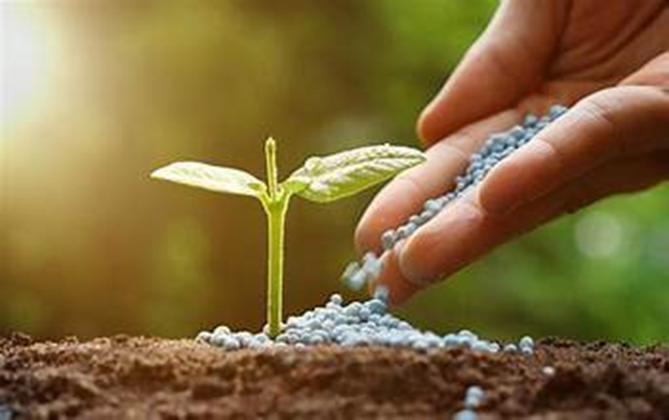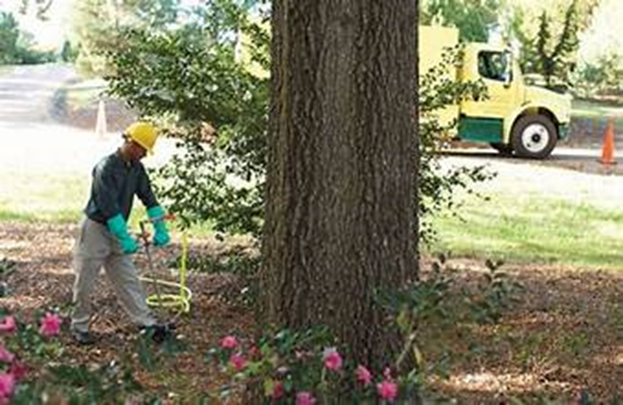Seven Fertilizing Tips to Boost Tree Health, Appearance and Life Span
Trees need plenty of nutrients to grow healthy and strong. If they don’t get them, they’ll wither and die. The soil provides plenty of nutrients for trees. But nutrient depletion over time, poor soil management, natural factors like soil type, and pollution (acid rain and agricultural runoff) can strip nutrients from the soil and make it less rich. So can soil erosion, excessive tilling, overfertilizing, soil that’s too sandy, and acid rocks.
To preserve trees on your property, you must ensure your soil has plenty of nutrients and organic matter. Below are five signs you need to fertilize your trees and shrubs to boost your soil’s nutrient content.
- Yellowing leaves
- Stunted growth
- Poor flowering
- Thin foliage
- Dead or dying branches
If you see any or all of these signs with your trees, they indicate that your soil may lack the nutrients needed to grow healthy trees. Testing your soil will tell you for sure.

Testing Your Soil
Testing your property’s soil can uncover any problems you have with it. You can test soil anytime the ground isn’t frozen. The best time to test your soil, though, is in the spring. That way, you can address any issues before planting. If you live in Providence, you can get your soil tested for free. You can also get a soil test through URI’s Master Gardener program. Consult a local arborist or RI Tree for help or advice on soil testing.
The Morton Arboretum in Lisle, Illinois, recently conducted a five-year study designed to evaluate the effects of organic and inorganic fertilizers on soil quality and tree growth. Its researchers tested several substrates, including hardwood mulch, compost, aerated compost tea, synthetic NPK fertilizer, and a commercial biological product (mycorrhizae). The study shows that soil compost and mulch boost soil quality the most, while mulch and compost increase tree growth the most.
Benefits of Fertilizing Trees
Fertilizing benefits trees enormously. Put simply, it’s a cost-effective way to improve a tree’s health, appearance, and lifespan of a tree—all while helping benefit the environment. Here are several benefits of fertilizing trees:
- Boost tree growth and vigor
- Increase resistance to stress
- Improve full fruit and floor production
- Extend life span
- Enhance esthetic value
- Improve the quality of air
- Cut noise pollution
Keep in mind that trees absorb pollutants from the air and release oxygen. Plus, they reduce noise pollution by blocking sound waves.
Tips on Fertilizing Trees
The first step when fertilizing trees and shrubs is choosing the right fertilizer. Look for the letters NPK on a fertilizer label. That indicates the fertilizers include a nitrogen, phosphorous, and potassium mixture—three critical plant nutrients. Types of NPK fertilizers include balanced, incomplete, and organic.
If your trees have yellow leaves or show stunted growth, the soil may be deficient in nitrogen. In that case, you’ll want a fertilizer rich in nitrogen content. Otherwise, you may want a good “balanced” fertilizer with an NPK ratio of 10-10-10 or 12-4-8

Here are six additional tips on fertilizing trees and shrubs:
- Apply fertilizer from early spring to late fall. That’s the best time to fertilize trees in most areas. Don’t fertilize during the winter. It’s the worst time to do it.
- Spread the fertilizer over the tree’s root zone. That’s the area beneath its canopy. Apply the fertilizer evenly with help from a broadcaster or a drop spreader.
- Water the fertilizer thoroughly. That will help the nutrients penetrate deep into the soil.
- Sandy soil drains faster than clay soil. So, you may need to fertilize sandy soil more often than if you have clay soil.
- Fertilize in the fall in areas with cold winters, like New England. Trees will store nutrients all winter so they can return strong in the spring.
- Avoid overfertilizing. That can not only damage plants, it can also pollute the environment. Follow the directions on the fertilizer label.
These tips can help you when it comes to taking care of your trees and shrubs. If you have any questions regarding fertilization, contact an arborist or RI Tree. Asking for help from a professional never hurts.